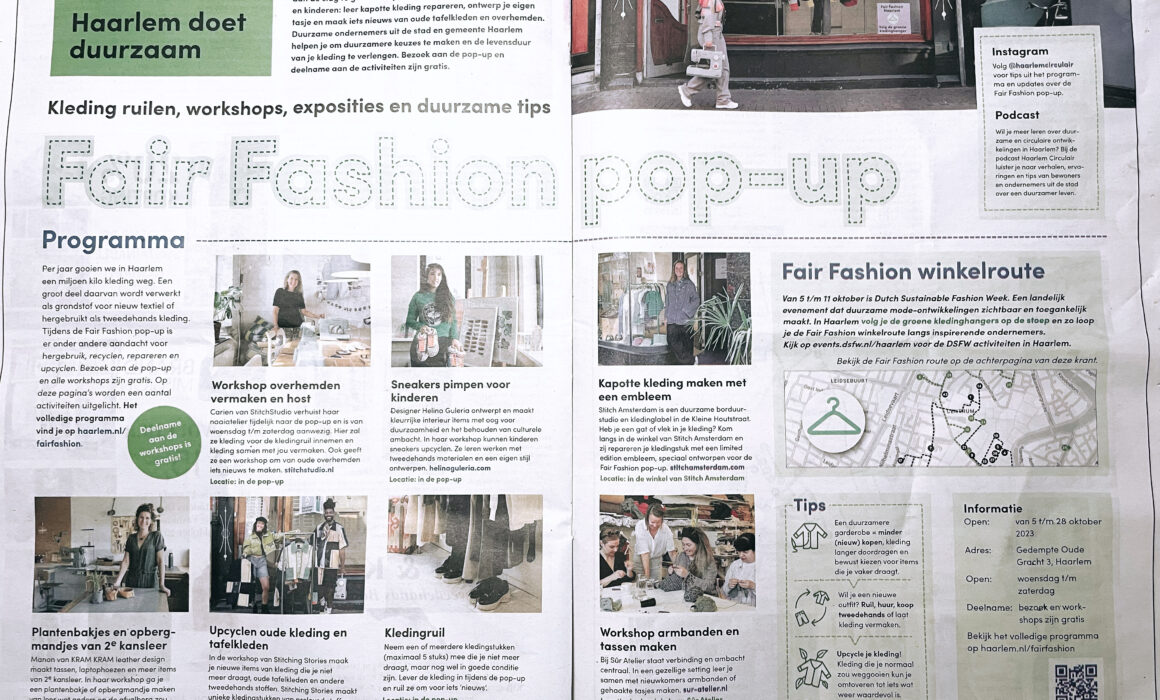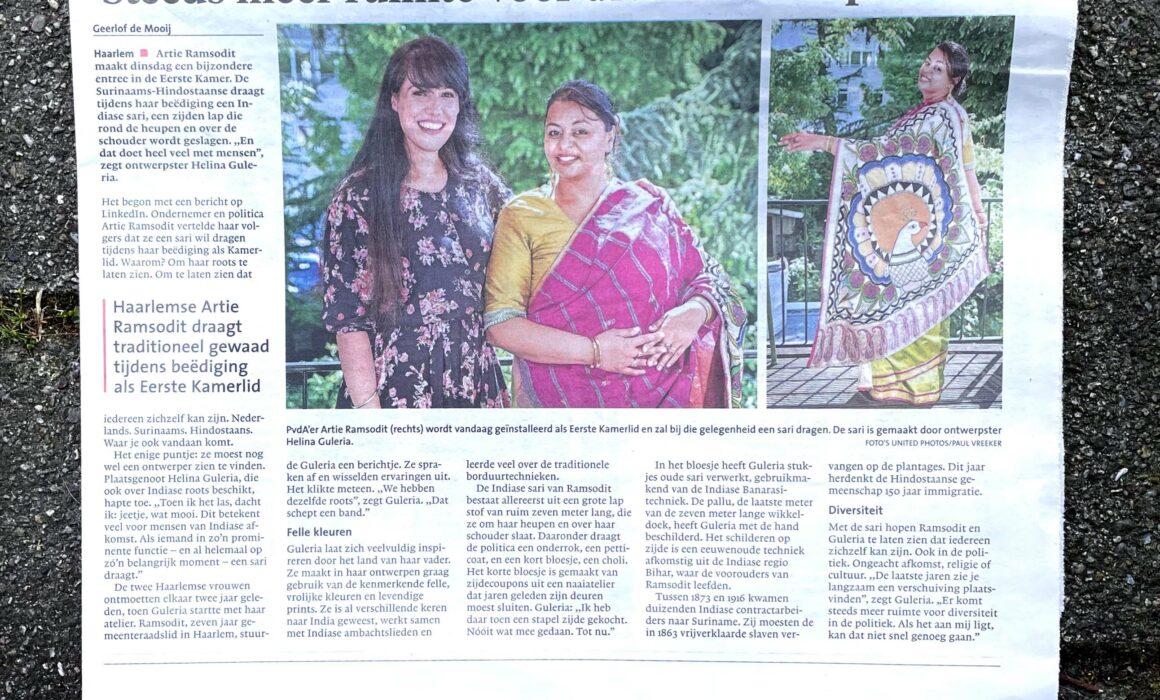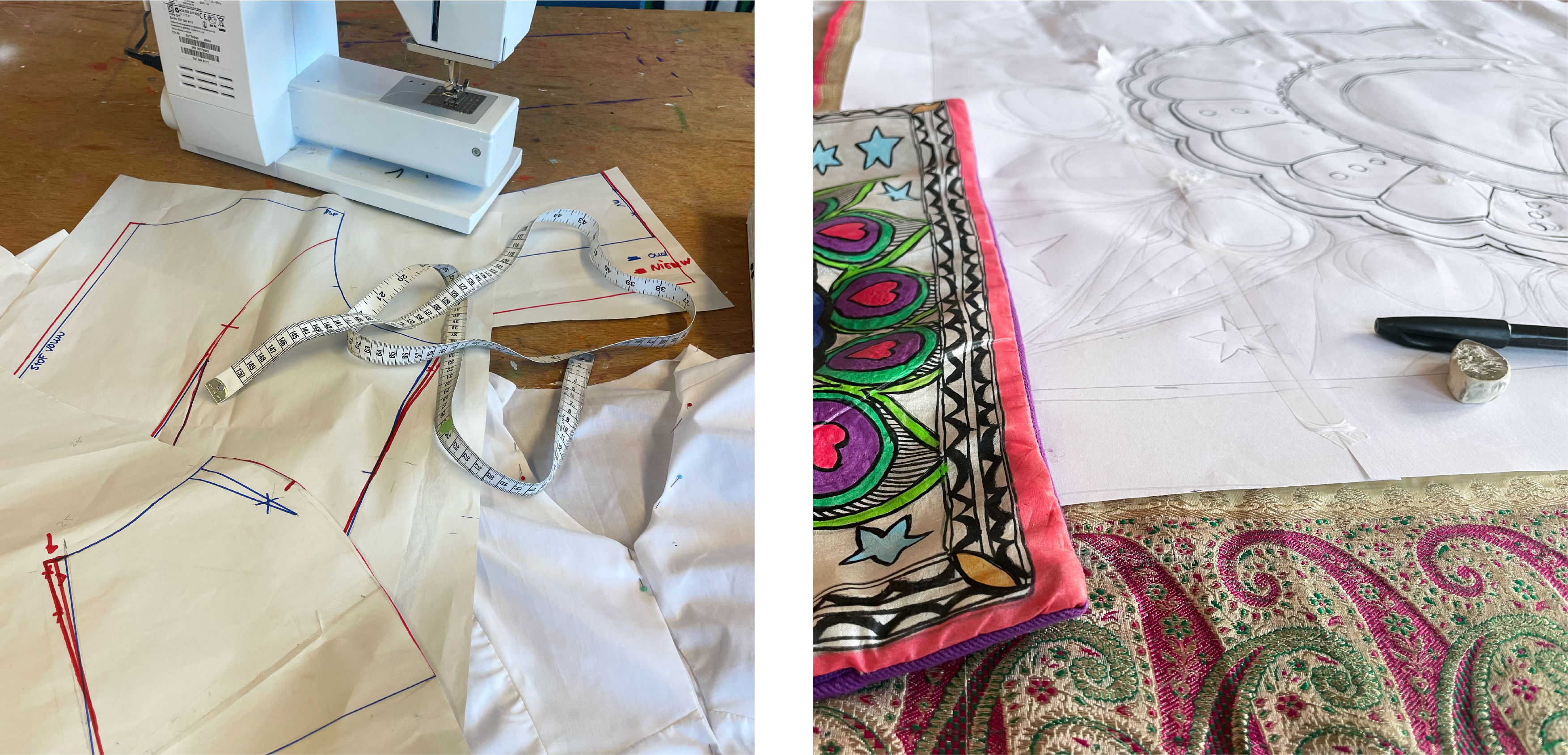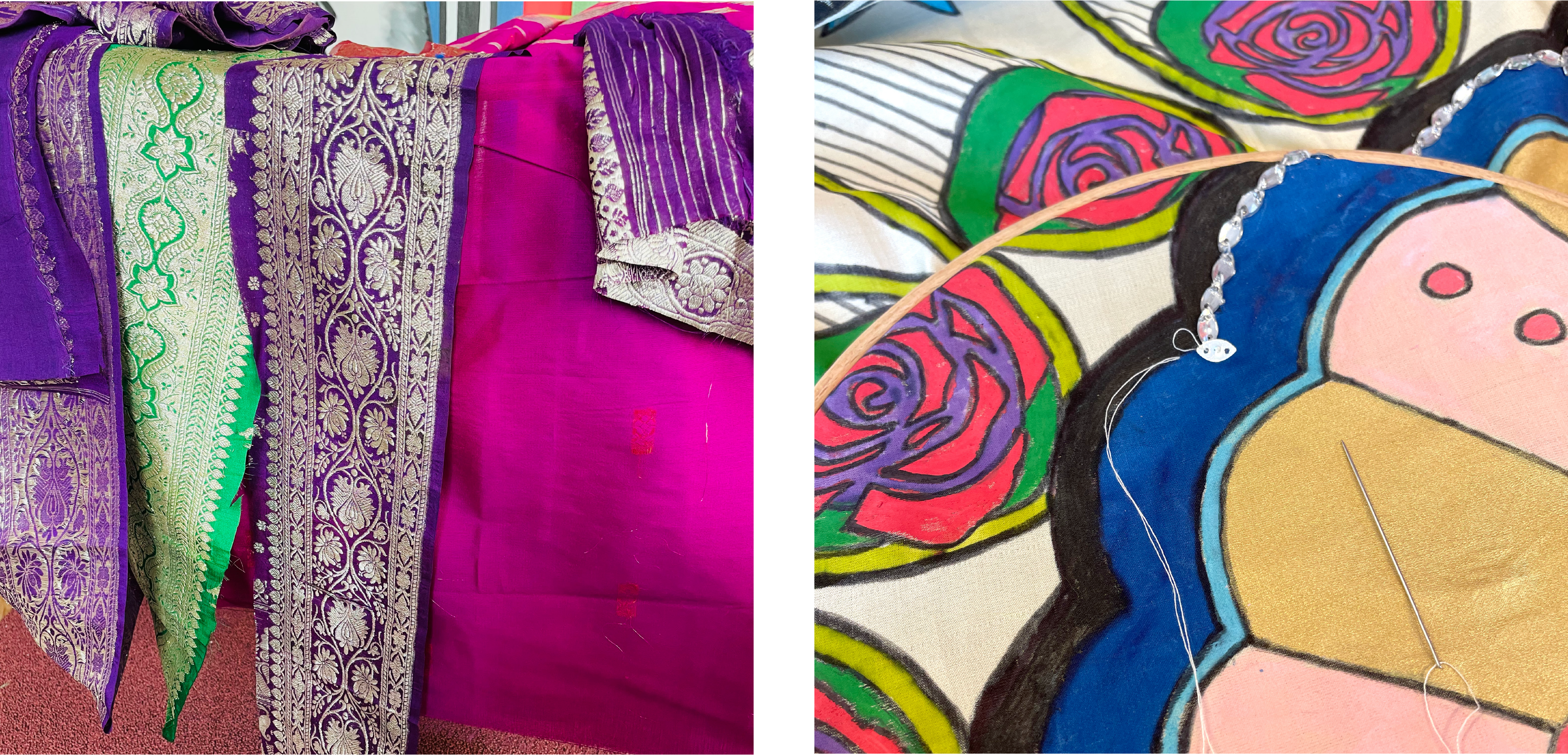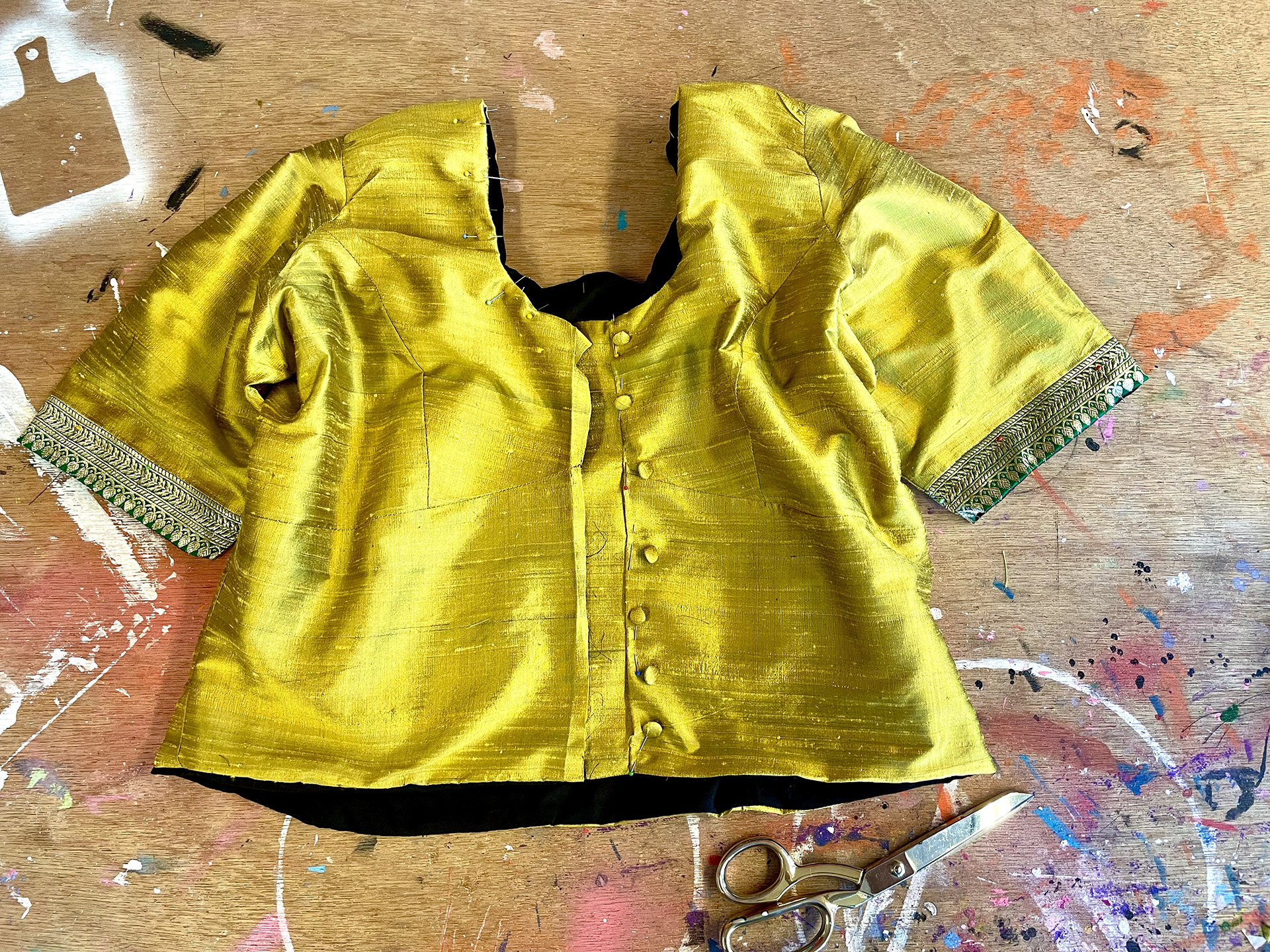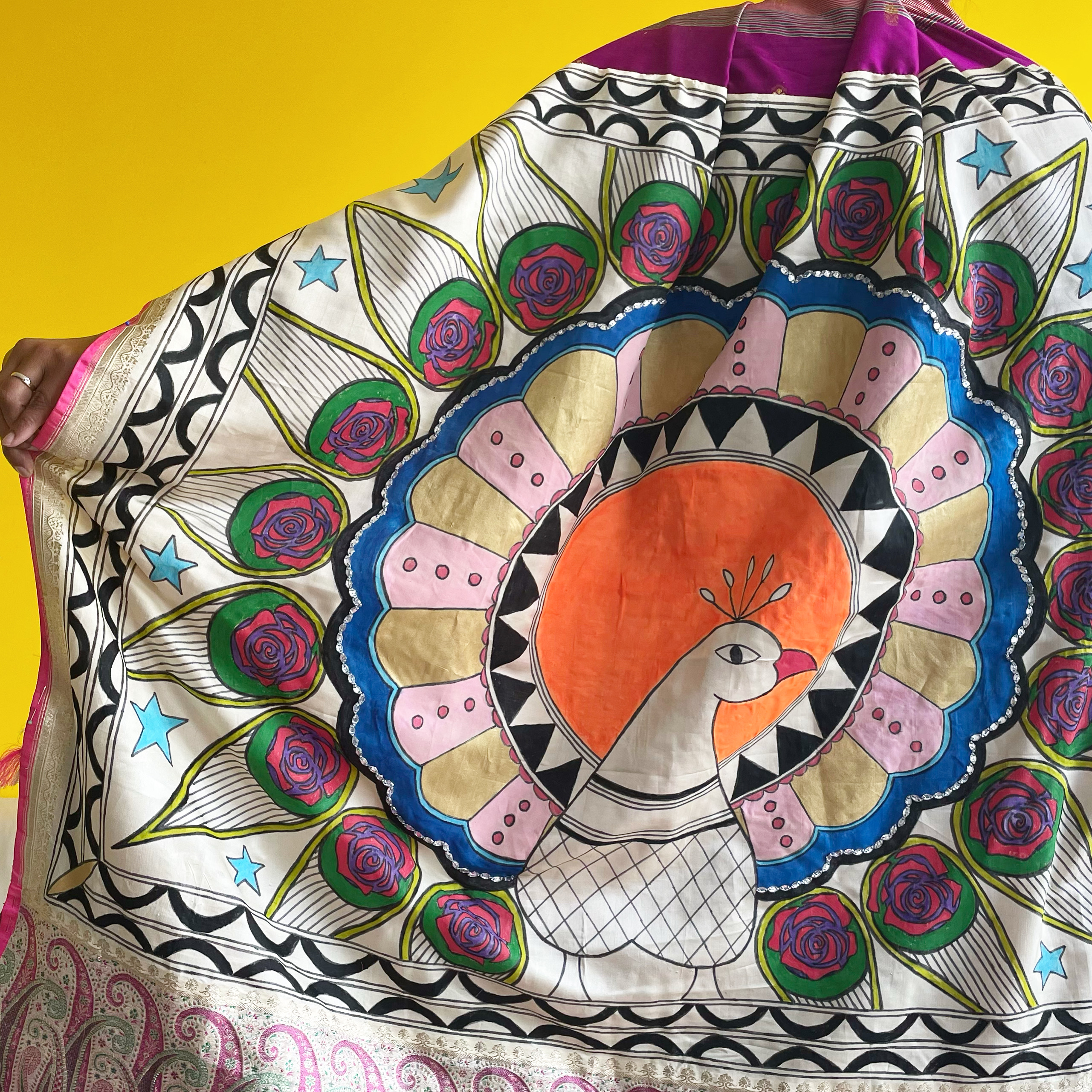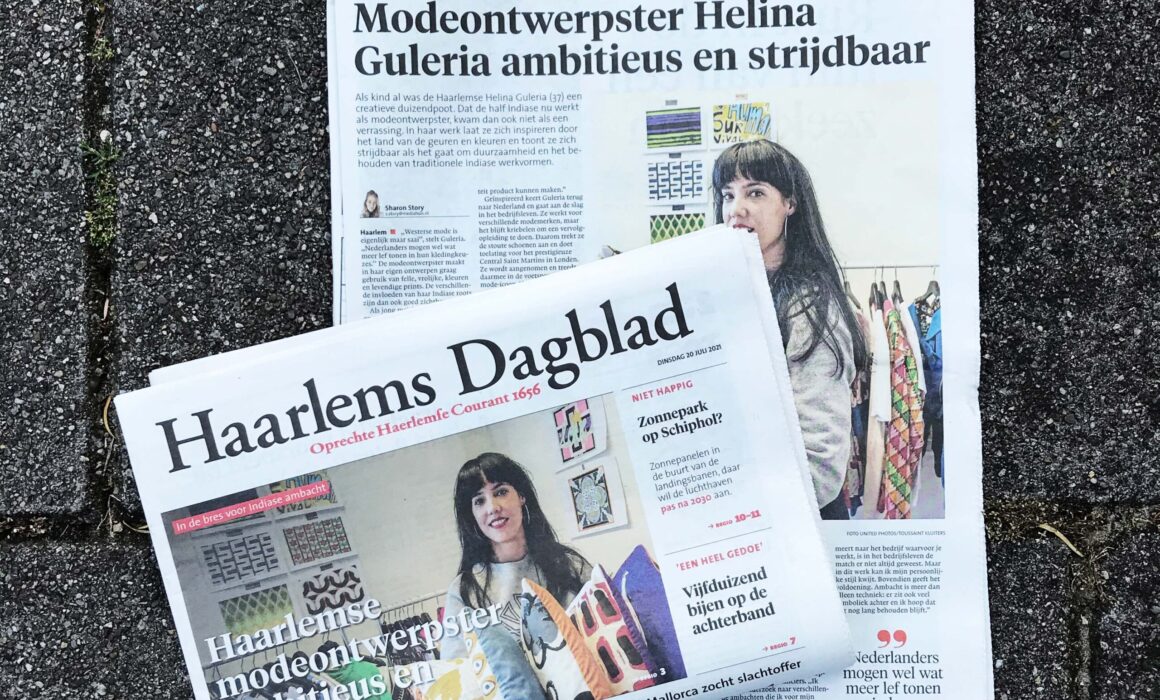Haarlems Nieuwsblad
Haarlem goes sustainable
Come to the Fair Fashion pop-up from October 5 to 28 in Haarlem. Participate in a workshop, be inspired by local sustainable entrepreneurs and come and exchange clothes. Want to get started? There are plenty of workshops for adults and children: learn to repair broken clothes, design your own bag and make something new from old tablecloths and shirts. Sustainable entrepreneurs from the city and municipality of Haarlem help you make more sustainable choices and extend the lifespan of your clothing. Visiting the pop-up and participating in the activities are free.
Swapping clothes, workshops, exhibitions and sustainable tips
Fair fashion pop-up
Program
Every year we throw away a million kilos of clothing in Haarlem. A large part of this is processed as raw material for new textiles or reused as second-hand clothing. During the Fair Fashion pop-up, attention will be paid to reuse, recycling, repair and upcycling. Visits to the pop-up and all workshops are free. A number of activities are highlighted on these pages. The full program can be found at haarlem.nl/fairfashion
Pimping sneakers for children
Designer Helina Guleria designs and makes colorful interior items with an eye for sustainability and the preservation of cultural craft. In her workshops, children can upcycle sneakers. They learn to work with second-hand materials and design their own style. Helinaguleria.com
Location: in the pop-up

